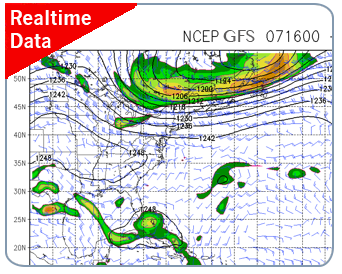
HFIP provides the basis for NOAA and other agencies to coordinate hurricane research needed to significantly improve guidance for hurricane track, intensity, and storm surge forecasts. It also engages and aligns the inter-agency and larger scientific community efforts towards addressing the challenges posed to improve hurricane forecasts. The goals of the HFIP are to improve the accuracy and reliability of hurricane forecasts; to extend lead time for hurricane forecasts with increased certainty; and to increase confidence in hurricane forecasts. These efforts will require major investments in enhanced observational strategies, improved data assimilation, numerical model systems, and expanded forecast applications based on the high resolution and ensemble-based numerical prediction systems.
The specific goals of the HFIP are to reduce the average errors of hurricane track and intensity forecasts by 20% within five years and 50% in ten years with a forecast period out to 7 days. The benefits of HFIP will significantly improve NOAA's forecast services through improved hurricane forecast science and technology. Forecasts of higher accuracy and greater reliability (i.e., user confidence) are expected to lead to improved public response, including savings of life and property.
Youngsun Jung
HFIP Program Manager
NOAA/NWS/OSTI
youngsun.jung@noaa.govVijay Tallapragada
HFIP Development Co-Manager
NOAA/NWS/EMC
vijay.tallapragada@noaa.govSundararaman (Gopal) Gopalakrishnan
HFIP Development Co-Manager
NOAA/OAR/AOML
sundararaman.g.gopalakrishnan@noaa.govFrank Marks
HFIP Science Manager
NOAA/OAR/AOML
Frank.Marks@noaa.gov
